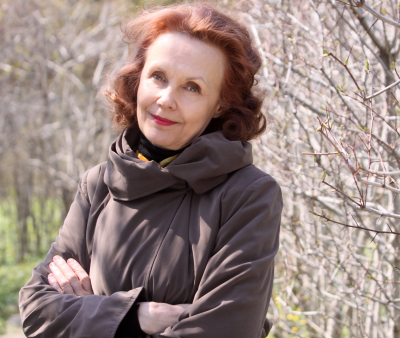Boston Symphony celebrates two iconoclastic Finns — and Mozart

Kaija Saariaho’s naturalistic “Ciel d’hiver” preceded works by Sibelius and Mozart Friday at Symphony Hall. Photo: Andrew Campbell
“The people you think are conservative might actually be radical,” the composer Morton Feldman told a lecture audience in 1984, right before he proceeded to hum Sibelius’ Fifth Symphony from the podium to make his point.
Once a favorite in traditional symphonic repertoire, Sibelius has become a model for the avant-garde. His boundary-pushing compatriot Kaija Saariaho, for one, claimed to be influenced by the composer’s crystalline formal designs, even as she had dismissed his lyrical style in her youth.
So when guest conductor (and Helsinki native) John Storgårds led the Boston Symphony Orchestra in music by Saariaho and Sibelius at Symphony Hall Thursday night, one got the sense of an evolutionary continuum playing out in real time.
Saariaho’s spectral music captures natural wonders in minute detail that seems to organize itself organically. Her 12-minute Ciel d’hiver (“Winter Sky”), the concert’s opener, is a 2013 reworking of the second movement from her 2002 Orion symphony for large orchestra — and a piece at once dense and shimmering. Motives passing between solo flute and violin twine around bristly dissonances that sit like stone. What motion there is unfolds glacially, and listeners are left to marvel at the slow transformation of glistening harmonics and orchestral color.
Making his subscription debut Thursday night, with Saariaho in attendance, Storgårds led a delectable reading. His swift gestures conjured wisps of melody that coiled upward and fell back into a fog of sound. Cellist Sato Knudsen’s floating line in the final pages projected a thread of warmth into a chilly musical picture, and applause for this adventurous work was rapturous as Saariaho took a well-deserved bow.
As an expression of what music can be, Ciel d’hiver clearly owes something to Sibelius’ final two symphonies, which made up the second half of Thursday’s program. Both Finns reflect subtleties of nature in their music, employing novel compressions and rearrangements of traditional design.
With symphonies nos. 6 and 7, Sibelius abandoned well-worn forms for more imaginative structures that reveal, develop and resolve themes in surprising ways — an approach that musicologist James Hepokoski dubbed “rotational form.”
Conducting with and without baton, Storgårds led sweeping accounts while lingering for just the right amount over the music’s abiding sense of mystery. His tempos in the Sixth were fleet, and its opening themes in the outer movements flowered like Renaissance polyphony, with resonant brass harmonies adding radiance to the strings.
The conductor deftly navigated the curious diversions that Sibelius planted throughout the work. Silences held tension effectively, and the final bars — a scene of dissolution and decay — faded like dying light.
In the Seventh Symphony, Storgårds built each passage to satisfying resolutions. The work’s big theme — an ode to Sibelius’ wife Aino — revealed itself in grand statements before the music shattered into fragments. Elsewhere, the orchestra played with soft colors and just enough edge to the sound to make the quick passages of this single-movement symphony flicker and dissipate.
Mozart’s Piano Concerto No. 22, which came before intermission (almost as a nod to vieille-garde Sibelius’ place in concert programming), was just as expressive. Symphony Hall has seen highs and lows of Mozart performance in recent weeks — Alessio Bax’s quizzical and saccharine account of the Piano Concerto No. 24 comes to mind. On Thursday, pianist Martin Helmchen had the more nimble Piano Concerto No. 22 in E-flat to work with in rescuing the local Mozart listening experience.
With a repertoire spanning Schubert and Britten, Helmchen plays with a bold technique and firm, fruity tone. While the concerto’s first movement felt detached, almost dry, Helmchen reeling off its scales and chords with practiced ease, his reading of No. 22 was ultimately sensitive.
Helmchen softened his touch for the second theme, and in the second movement his dialogue with the winds formed a delicate, chamber-like exchange. The Rondo coursed energetically, Helmchen’s phrases a whisper at times to the chugging accompaniment. His cadenza (by his brother-in-law, Martin Hecker), with its wide chromatic sweeps, took listeners to the very edge of proper style without being overblown.
Storgårds led accompaniment that underlined the nuances of Helmchen’s phrasing. Breathy orchestration lent this reading an intimacy that respected Classical-era notions of balance, including Mozart’s perpetual dance between exuberance and grace.
The program will be repeated 1:30 p.m. Friday and 8 p.m. Saturday and Tuesday at Symphony Hall. bso.org; 888-266-1200.
Posted in Performances




